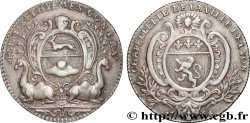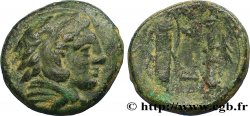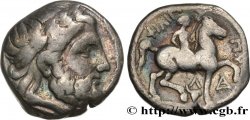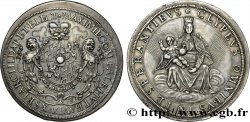fjt_700264 - CORPORATIONS - LES SIX CORPS DES MARCHANDS DE PARIS Brodeurs - Chasubliers 1704
200.00 €
Cantidad
Añadir a su cesta

Tipo : Brodeurs - Chasubliers
Fecha: 1704
Metal: plata
Diámetro: 28,5 mm
Eje de acuñación: 6 h.
Peso: 5,46 g.
Canto: lisse
Grado de rareza: R2
N° en los catálogos de referencia :
Anverso
Titulatura del anverso: MARCHANDS. BRODEURS. CHASUBLIERS.
Descripción del anverso: Armes des marchands brodeurs - chasubliers.
Reverso
Titulatura del reverso: SANS. VOUS. IE. NE. PUIS. VIVRE ; À L'EXERGUE : 1704.
Descripción del reverso: Un jardin de plantes tinctoriales sous le soleil.
Comentario
Ce jeton marque en 1704 la redéfinition des statuts qui réduisent le nombre de maîtres brodeurs à 200. La volonté est de revenir au même nombre qu'au XIIIe siècle, pour conserver une bonne organisation intérieure et préserver les traditions de cet art.
Les ouvrages de cette communauté ne se bornaient pas aux ornements d'église dont les chasubliers avaient le privilège. Ils comprenaient entre autres les broderies d'uniformes pour les compagnies militaires.
Le choix des plantes tinctoriales comme revers fait tout à fait sens pour une corporation dont la matière première était l’étoffe et le fil.
This token marks the redefinition of the statutes in 1704, which reduced the number of master embroiderers to 200. The aim was to return to the same number as in the 13th century, to maintain good internal organization and preserve the traditions of this art. The works of this community were not limited to the church ornaments for which the chasuble makers had the privilege. They included, among other things, the embroidery of uniforms for military companies. The choice of dye plants as the reverse makes perfect sense for a corporation whose raw material was fabric and thread.
Les ouvrages de cette communauté ne se bornaient pas aux ornements d'église dont les chasubliers avaient le privilège. Ils comprenaient entre autres les broderies d'uniformes pour les compagnies militaires.
Le choix des plantes tinctoriales comme revers fait tout à fait sens pour une corporation dont la matière première était l’étoffe et le fil.
This token marks the redefinition of the statutes in 1704, which reduced the number of master embroiderers to 200. The aim was to return to the same number as in the 13th century, to maintain good internal organization and preserve the traditions of this art. The works of this community were not limited to the church ornaments for which the chasuble makers had the privilege. They included, among other things, the embroidery of uniforms for military companies. The choice of dye plants as the reverse makes perfect sense for a corporation whose raw material was fabric and thread.








 Informar de un error
Informar de un error Imprimir la página
Imprimir la página Comparte mi selección
Comparte mi selección Haz una pregunta
Haz una pregunta Consignar / vender
Consignar / vender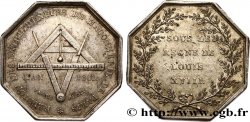
 Descriptivo
Descriptivo
